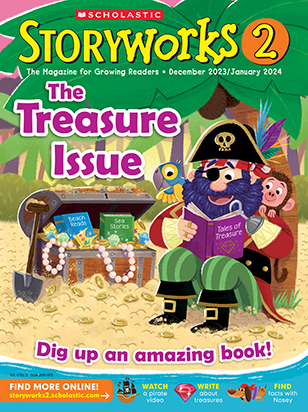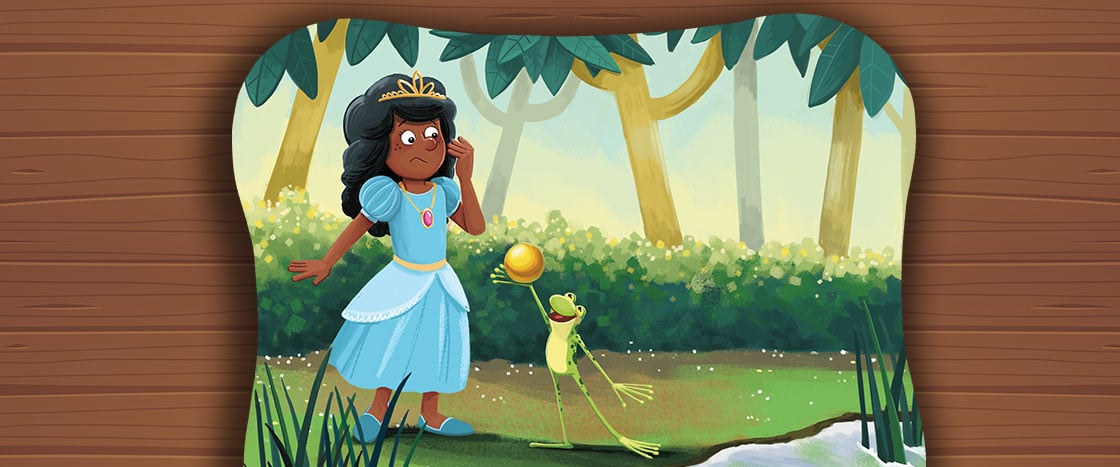Once upon a time, there lived a princess. For her birthday, the king gave her a golden ball.
She played with the ball all day. One day, she threw it too high. It plopped into a pond.
“Oh no!” she said.
“Why are you crying?” said a funny little voice. It was a talking frog!
“I dropped my ball in the pond,” said the princess.
“I’ll get it,” said the frog. “But what will you do for me?”
“I’ll be your best friend,” said the princess.
The frog jumped into the pond. He came back with the golden ball in his mouth. The princess grabbed the ball. Then she ran back home.
That night, she heard a knock at the door. It was the frog!
“You promised we would be friends,” he said. “Let me come eat dinner with you.” He let out a loud BURP!
Once upon a time, there was a princess. The king gave her a golden ball.
She played with the ball all day. One day, she threw it too high. It fell into a pond.
“Oh no!” she said.
“Why are you crying?” said a little voice. It was a talking frog!
“I dropped my ball. It fell in the pond,” said the princess.
“I’ll get it,” said the frog. “But what will you do for me?”
“I’ll be your best friend,” said the princess.
The frog jumped into the pond. Then he came back.
He had the golden ball in his mouth. The princess took the ball. She ran back home.
That night, she heard a knock at the door. It was the frog!
“You promised we would be friends,” he said. “Let me eat with you.” He let out a loud BURP!

